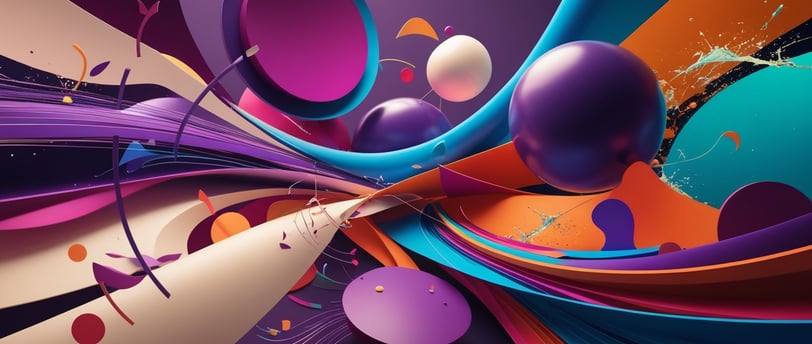Exploring Abstract Shapes: Art and the Essence of Community
Abstract shapes—like circles, waves, and geometric lines—are more than just artistic elements. They serve as visual metaphors for the flow of ideas and connections in a decentralized world. When we look at these forms, we see more than mere patterns; they tell stories of how communities can thrive when power is distributed rather than held tightly in the hands of a select few.
10/21/20241 min read


The Power of Abstract Shapes
Abstract shapes—like circles, waves, and geometric lines—are more than just artistic elements. They serve as visual metaphors for the flow of ideas and connections in a decentralized world. When we look at these forms, we see more than mere patterns; they tell stories of how communities can thrive when power is distributed rather than held tightly in the hands of a select few.
Connecting Through Colors and Patterns
Color and pattern play crucial roles in abstract art, reflecting the vibrancy of community life. Think about it: a collection of colorful shapes can symbolize different voices and perspectives, each contributing to the overall harmony. Just like in a thriving community, these colors collide, blend, and even contrast, showing us that diversity fuels creativity. This artsy mashup leads to a deeper understanding of connection—where everyone's input is essential to the collective tapestry.
Decentralization in the Artistic Space
In a world increasingly shaped by technology and decentralized systems, artists are boldly embracing abstract forms to illustrate these principles. The range of styles—from fluid shapes to crisp lines—empowers creativity and innovation, showcasing that no single style or approach dominates the scene. Just as decentralized technology seeks to distribute knowledge and power, abstract art encourages multiple interpretations and responses. It invites the viewer to ponder connections and community, allowing each individual to find their unique meaning in the chaos of shapes.
Through abstract art, we can visualize the ideal of a connected world. As we explore these forms, we remind ourselves of the potential that lies in collaboration, creativity, and shared understanding. So the next time you find yourself studying a piece of abstract art, let your imagination roam. Discover the stories behind the shapes, colors, and patterns, and reflect on how they mirror the intricate web of communities that surround us. In this way, abstract art becomes not just a visual experience, but also a philosophical journey into how we relate, operate, and thrive together.
